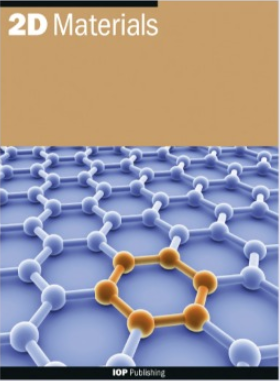The role of solvent interfacial structural ordering in maintaining stable graphene dispersions
IF 4.5
3区 材料科学
Q2 MATERIALS SCIENCE, MULTIDISCIPLINARY
引用次数: 0
Abstract
Liquid phase exfoliation is the most promising method for the low-cost, scalable production of two-dimensional nanosheets from their bulk counterparts. Extensive exfoliation occurs in most solvents due to the huge amount of energy introduced by sonication or shear mixing. However, the subsequent dispersion is not always stable, with extensive reaggregation occurring in some solvents. Identifying the optimal solvent for a particular layered material is difficult and requires a fundamental understanding of the mechanism involved in maintaining a stable dispersion. Here, we use molecular dynamics calculations to show that when graphene is immersed in a solvent, distinct solvation layers are formed irrespective of the choice of solvent and their formation is energetically favourable for all considered solvents. However, energetic considerations such as these do not explain the experimental solvent-dependence of the dispersion concentration. Instead, we find that solvents with high diffusion coefficients parallel to the graphene layer result in the lowest experimental concentration of graphene in solution. This can be explained by the enhanced ease of reaggregation in these solvents. Solvents with smaller diffusion coefficients result in higher experimental graphene concentrations as reaggregation is prevented. In the low diffusion limit, however, this relationship breaks down. We suggest that here the concentration of graphene in solution depends primarily on the separation efficiency of the initial exfoliation step. Based on this, we predict that the concentration of exfoliated graphene in solvents such as benzaldehyde and quinoline, which have low diffusion constants, can be increased dramatically by careful tuning of the experimental sonication parameters.溶剂界面结构有序化在维持石墨烯分散稳定中的作用
液相剥离法是以低成本、可扩展的方式生产二维纳米片的最有前途的方法。由于超声或剪切混合引入了巨大的能量,在大多数溶剂中都会发生广泛的剥离。然而,随后的分散并不总是稳定的,在某些溶剂中会发生广泛的再聚集。确定特定层状材料的最佳溶剂非常困难,需要从根本上了解维持稳定分散的机制。在这里,我们利用分子动力学计算表明,当石墨烯浸入溶剂中时,无论选择哪种溶剂,都会形成不同的溶胶层,而且在所有考虑的溶剂中,溶胶层的形成在能量上都是有利的。然而,这些能量因素并不能解释分散浓度与实验溶剂的关系。相反,我们发现平行于石墨烯层的高扩散系数溶剂会导致溶液中石墨烯的实验浓度最低。这是因为在这些溶剂中石墨烯更容易重新聚集。扩散系数较小的溶剂会阻止石墨烯的再聚集,因此实验结果中的石墨烯浓度较高。然而,在低扩散极限时,这种关系就会打破。我们认为,在这种情况下,溶液中石墨烯的浓度主要取决于初始剥离步骤的分离效率。在此基础上,我们预测在苯甲醛和喹啉等扩散常数较低的溶剂中,通过仔细调整实验超声参数,可以显著提高剥离石墨烯的浓度。
本文章由计算机程序翻译,如有差异,请以英文原文为准。
求助全文
约1分钟内获得全文
求助全文
来源期刊

2D Materials
MATERIALS SCIENCE, MULTIDISCIPLINARY-
CiteScore
10.70
自引率
5.50%
发文量
138
审稿时长
1.5 months
期刊介绍:
2D Materials is a multidisciplinary, electronic-only journal devoted to publishing fundamental and applied research of the highest quality and impact covering all aspects of graphene and related two-dimensional materials.
 求助内容:
求助内容: 应助结果提醒方式:
应助结果提醒方式:


